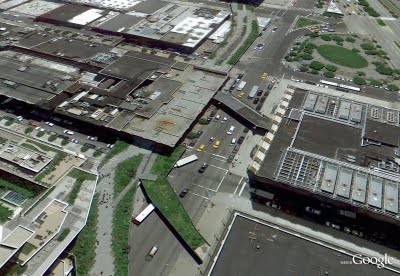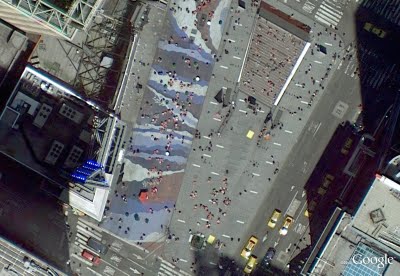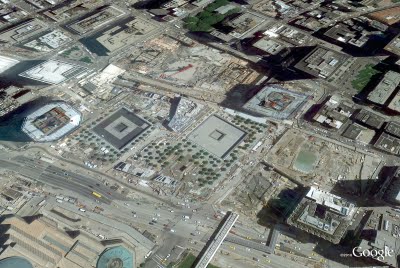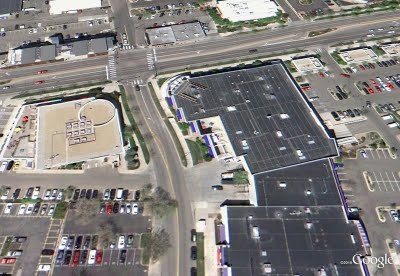The Commissioners’ Plan of 1811 proposed a highly regular grid pattern as the layout for an island that was mostly farmland and wilderness in a still-young country. Two hundred years after the streets and avenues were dreamed up, the landscape of New York City has changed dramatically as skyscrapers have been built, parks have been planted and the population has increased by millions. Today’s latest batch of updated imagery reveals new, high resolution imagery of Manhattan. It’s now live in Google Earth and will appear in Google Maps soon.

This new batch of imagery also covers another Google hometown: Boulder, Colorado, home to the 3D team that brings you Google SketchUp and the Google 3D Warehouse. That team expanded two months ago across the street.
Want to check out how these places used to look? Use the Historical Imagery feature of Google Earth to slide back the clock around the world. And as always, we encourage you to check out more of the areas that can be seen in our latest imagery update. Enjoy!
High resolution aerial updates:
Boise, ID; Denver, CO; Topeka, KS; St Cloud, MN; Ashland, WI; Ironwood, MI; Flint, MI; Ft Wayne, IN; Cape Girardeau, MO; Bowling Green, KY; Glasgow, KY; Greenville, NC; Atlantic City, NJ; Syracuse, NY; Manhattan, NY
Countries/regions receiving high resolution satellite updates:
Canada, United States, Mexico, Cuba, The Bahamas, The Dominican Republic, Belize, Guatemala, El Salvador, Honduras, Nicaragua, Costa Rica, Panama, Colombia, Venezuela, Ecuador, Brazil, Peru, Paraguay, Bolivia, Argentina, Chile, Madagascar, South Africa, Lesotho, Swaziland, Namibia, Botswana, Mozambique, Zambia, Angola, Tanzania, Democratic Republic of the Congo, Uganda, Kenya, Somalia, Ethiopia, Sudan, Eritrea, Egypt, Niger, Burkina Faso, Ghana, Sierra Leone, Mali, Senegal, The Gambia, Mauritania, Morocco, Algeria, Yemen, Saudi Arabia, United Arab Emirates, Qatar, Kuwait, Jordan, Israel, Syria, Lebanon, Iran, Turkey, Russia, Finland, Sweden, Norway, Estonia, Latvia, Belarus, Ukraine, Poland, Hungary, Romania, Bulgaria, Greece, Albania, Serbia, Croatia, Austria, Germany, Italy, Switzerland, France, Spain, Portugal, England, Azerbaijan, Kazakhstan, Uzbekistan, Kyrgyzstan, Pakistan, India, Sri Lanka, Bangladesh, Nepal, China, Myanmar, Laos, Thailand, Vietnam, Cambodia, Malaysia, Taiwan, The Philippines, Japan, Korea, Indonesia, Australia, New Zealand
These updates are now available in Google Earth and coming soon to Google Maps. To get a complete picture of where we updated imagery, download this KML for viewing in Google Earth.



